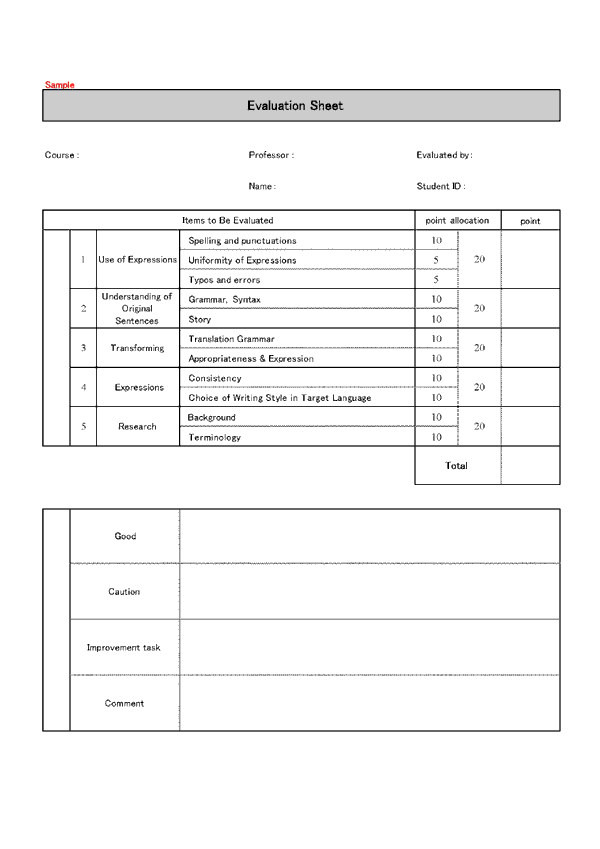| Course Syllabus |
|
Course Name |
Translating Informational Texts (E-J) (Course No:52012) |
|
Category |
Expert Competence |
|
Year Taken |
First or Second Year |
| Offered Major/ Type of Course |
Major 1 / Elective |
| Number of Credit |
2 |
| Number of Classes |
16 |
| Professor |
Akio Kobayashi
Email address: akio.k@babel.edu |
| Course Description |
Using non-fiction material, which has the highest demand in translation, analyze from various aspects of translation.
|
| Course Policy |
Attendance: Enter the course with password.
Netiquette: Refer to the Netiquette Policy in the Student Handbook.
Student with special needs: Refer to the Students with Disabilities and Accommodation Policy in the Student Handbook.
Academic Honesty: Refer to the Student integrity and Academic Honesty Policy in the Student Handbook.
Honor Code: Refer to the Honor Code Policy in the Student Handbook. |
| Course Objective (Goal) |
Learn non-fiction translation through translating various sentence styles. |
| Learning Outcome |
Translate idiomatically and comprehensively various sentences and texts, focusing on non-fiction and general education books. Translate at a speed of 250 words per hour (source language). |
| Course Progression |
Prepare your own translation
Listen to audio lectures
Self-evaluate own translation using sample translation
Submit assignment |
| Deliverable (Course Text) |
The English: A Portrait of a People by Jeremy Paxman
*Edited and authored by Professor
*Revised in November 2012 |
| Course Outline |
Lecture 1: Basics to Translation (1)
Importance of understanding English sentences (word and context)
Lecture 2: Basics to Translation (2)
Natural and clear translation (equivalencies and rhythm)
Lecture 3: Basics to Non-fiction Translation (1)
Grasping distinctive features to a writing
Lecture 4: Basics to Non-fiction Translation (2)
Deciding style of translation
Lecture 5: Basics to Non-fiction Translation (3)
Researching
Lecture 6: Basics to Non-fiction Translation (4)
Polishing the translation
Lecture 7: Genre of Non-fiction (1)
Accurately translating the fact
Lecture 8: Genre of Non-fiction (2)
Accurately translating the fact
Lecture 9: Genre of Non-fiction (3)
Translating argument appropriately
Lecture 10: Genre of Non-fiction (4)
Translating author’s breath (idea)
Lecture 11: Genre of Non-fiction (5)
Translating author’s breathe (idea)
Lecture 12: Genre of Non-fiction (6)
Translating author’s breathe (idea)
Lecture 13: Completing a Translation (1)
Degree of adding and supplementing
Lecture 14: Completing a Translation (2)
Arranging the sentence
Lecture 15: Defining the Difference between Fiction and Non-fiction
Lecture 16: Review |
| Grade Evaluation and Course Requirement |
1. Assignments (All assignments must be submitted)
2. Final Exam (Minimum Course Requirement: B or above)
| Grade |
Score |
| A |
85 - 100 |
| B |
70 - 84 |
| C |
60 - 69 |
| D |
50 - 59 |
| F |
49 and under |
Submission papers will be returned with the evaluation sheet, which states evaluation marking and comments as well as corrections with rubrics.
|
 |